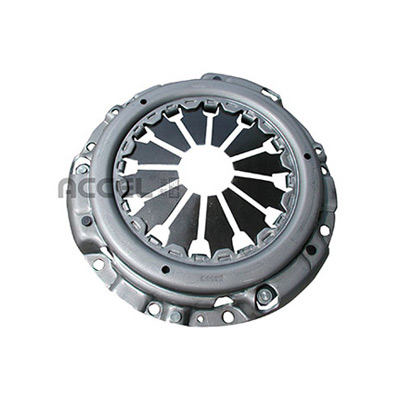- Arabic
- French
- Russian
- Spanish
- Portuguese
- Turkish
- Armenian
- English
- Albanian
- Amharic
- Azerbaijani
- Basque
- Belarusian
- Bengali
- Bosnian
- Bulgarian
- Catalan
- Cebuano
- Corsican
- Croatian
- Czech
- Danish
- Dutch
- Afrikaans
- Esperanto
- Estonian
- Finnish
- Frisian
- Galician
- Georgian
- German
- Greek
- Gujarati
- Haitian Creole
- hausa
- hawaiian
- Hebrew
- Hindi
- Miao
- Hungarian
- Icelandic
- igbo
- Indonesian
- irish
- Italian
- Japanese
- Javanese
- Kannada
- kazakh
- Khmer
- Rwandese
- Korean
- Kurdish
- Kyrgyz
- Lao
- Latin
- Latvian
- Lithuanian
- Luxembourgish
- Macedonian
- Malgashi
- Malay
- Malayalam
- Maltese
- Maori
- Marathi
- Mongolian
- Myanmar
- Nepali
- Norwegian
- Norwegian
- Occitan
- Pashto
- Persian
- Polish
- Punjabi
- Romanian
- Samoan
- Scottish Gaelic
- Serbian
- Sesotho
- Shona
- Sindhi
- Sinhala
- Slovak
- Slovenian
- Somali
- Sundanese
- Swahili
- Swedish
- Tagalog
- Tajik
- Tamil
- Tatar
- Telugu
- Thai
- Turkmen
- Ukrainian
- Urdu
- Uighur
- Uzbek
- Vietnamese
- Welsh
- Bantu
- Yiddish
- Yoruba
- Zulu
Σεπ . 04, 2024 18:10 Back to list
Motorcycle Drive Belts | Durable and High-Performance Options
Understanding Motorcycle Drive Belts An Essential Component for Performance
Motorcycles are a unique blend of art and engineering, and at the heart of their performance lies a critical component known as the drive belt. While many motorcycle enthusiasts may be familiar with chains and shafts, drive belts are becoming increasingly popular in various motorcycle designs, particularly in cruisers and some modern touring bikes. Understanding how these drive belts work and their advantages can greatly enhance your riding experience.
What Are Motorcycle Drive Belts?
Drive belts are flexible, toothed belts made from high-strength materials designed to transfer power from the engine to the rear wheel. Unlike traditional chains or shaft drives that rely on metal components and lubrication, drive belts utilize a rubber or composite material that is lighter, quieter, and requires less maintenance.
One of the most common types of drive belts is the 'V-belt,' which operates similarly to the belts found in automotive applications. These belts have a trapezoidal shape and are designed to run on pulleys, effectively transmitting power efficiently while reducing slippage.
Benefits of Using Drive Belts
1. Low Maintenance Drive belts require significantly less maintenance compared to chains, which need regular lubrication and tension adjustments. While belts do need occasional inspection for wear and proper tension, they are generally much simpler to maintain.
motorcycle drive belts

2. Smooth Operation One of the standout features of drive belts is the incredibly smooth ride they provide. With less vibration and noise, riders enjoy a more comfortable experience, especially during longer journeys. This smoothness also translates into better power delivery, allowing for improved acceleration.
3. Lightweight Design Drive belts are typically lighter than chain and shaft systems, contributing to an overall reduction in the motorcycle's weight. This lighter design can enhance the bike's handling and responsiveness, making it easier to maneuver, especially in urban settings or during cornering.
4. Longevity When properly maintained, drive belts can last significantly longer than chains, which may require replacement after 15,000 to 25,000 miles under normal riding conditions. Drive belts can often exceed 30,000 miles before showing signs of wear.
5. Resistance to Corrosion and Dirt Unlike chains, which are susceptible to rust and dirt build-up that can cause reduction in performance, drive belts are generally resistant to environmental factors. This resistance means that riders can enjoy reliable performance, regardless of the weather conditions.
Conclusion
Motorcycle drive belts may not be the most commonly discussed transmission type, but their advantages make them worthy of consideration for any motorcycle enthusiast. With lower maintenance needs, enhanced comfort, and durable performance characteristics, drive belts have become an essential component in the design of many modern motorcycles. Understanding how they work and the benefits they offer can help riders make informed decisions when selecting their next bike, ensuring a smoother and more enjoyable ride every time they hit the road. Whether for daily commuting or long-distance touring, a motorcycle equipped with a drive belt promises an exhilarating experience.
-
Korean Auto Parts Timing Belt 24312-37500 For Hyundai/Kia
NewsMar.07,2025
-
7PK2300 90916-T2024 RIBBED BELT POLY V BELT PK BELT
NewsMar.07,2025
-
Chinese Auto Belt Factory 310-2M-22 For BMW/Mercedes-Benz
NewsMar.07,2025
-
Chinese Auto Belt Factory 310-2M-22 For BMW/Mercedes-Benz
NewsMar.07,2025
-
90916-02660 PK Belt 6PK1680 For Toyota
NewsMar.07,2025
-
drive belt serpentine belt
NewsMar.07,2025

